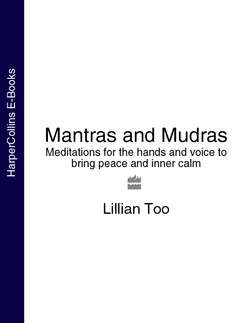Читать книгу Mantras and Mudras: Meditations for the hands and voice to bring peace and inner calm - Lillian Too - Страница 10
ОглавлениеMaking prostrations
One of the first things that Rinpoche taught me when I met him in Bodhgaya, India, was how beneficial it was to learn how to make prostrations to the holy objects, and especially to images of Buddha. Rinpoche said, “The merit is greater than all the grains of sand on the bed of the river Ganga . . .”
Rinpoche explained that because most of us have minds that are not purified of karmic obstacles, even if numberless Buddhas were to come in front of us, we would not be able to “see” the aspect of the Buddha, or that which is the pure aspect. We can only see the image of the Buddha shown as in a painting, or as a statue. So when we prostrate to an image of Buddha, in our minds and our hearts we are prostrating to Buddha. The image helps us to visualize. Those of us who have the good karma to meet a perfectly qualified guru can see Buddha emanating as an ordinary being who appears in the form of a humble monk and teacher. This explains why Tibetan Buddhists see His Holiness the Dalai Lama as the Buddha of Compassion. Although he takes the form of an ordinary human being, those who revere him see him as an emanation of the Buddha Chenrezig, the Compassionate Buddha (see page 34). So making prostrations to images of the Buddhas (or holy objects) and to our precious gurus is an act of reverence that precedes all prayers. Making prostrations helps the mind to develop genuine humility, and is a perfect way of overcoming arrogance and pride.
PROSTRATION MANTRA
Prostrate three times while reciting the mantra below. This multiplies it one thousand times. Prostrations purify the negative karma of the body. Verbally reciting mantras exalts the Buddha, purifying the negative karma of speech. The mental action of remembering the supreme power of the Buddha purifies the negative karma of the mind, thereby arousing faith.
OM NAMO MANJUSHRIYE
NAMA SUSHRIYE
NAMA UTTAMA SHRIYE SVAHA
PROSTRATION MUDRA
If for some reason you find it difficult to make the full-length or even the short prostrations (see opposite), you can visualize yourself prostrating while reciting the mantra. Use your hands to make the Prostration mudra. This mudra is almost universally accepted as the Prayer mudra, symbolizing reverence and respect. Fold your palms together upright, leaving some space in between. Bend the two thumbs inward to signify that the space between the palms is filled with offerings. This makes the mudra more auspicious.
The Prayer mudra, or Namaskara mudra. This is also the Prostration mudra.
Whether a life situation is wonderful or not depends on the way your mind perceives and interprets it. You can choose to label an experience “wonderful” or “a problem.” It depends completely upon your mind, upon your interpretation.
KYABJE LAMA ZOPA RINPOCHE
HOW TO MAKE PROSTRATIONS
There is a short prostration and a full-length prostration. Here is how to practice each one.
First, calm your mind and generate devotional thoughts. Think, “Reverently I prostrate with my body, speech, and mind, and take refuge in the Guru-Triple Gem – Buddha, Dharma, and Sangha.” Next, place your palms together, touching the top of your head; then bring them down to touch your forehead; then down again to touch your throat; and then touch your heart (see a, b, c, and d on page 8). Then bend down. Kneel on the floor and place your hands, palms down, on the floor (see e). If you are making the short prostration, lower your forehead until it touches the ground, and then get up. Repeat three times.
For the long prostration, stretch yourself full length on the floor after you have lowered yourself (see f). Raise your palms above your head (see g) and then get up (see h). Do not stay too long on the floor, and make your prostrations with focused concentration. Think reverential thoughts and dedicate the merit created to your own spiritual awakening. Keep your feet together and your fingers closed as you prostrate. The merit gained is simply enormous. As Rinpoche would say, “the merit is like sky!”
